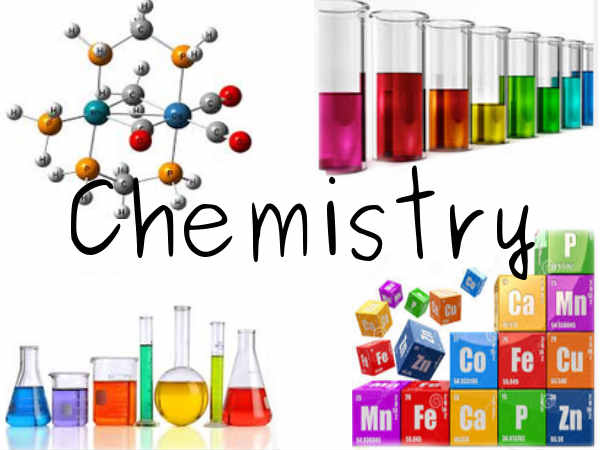Grade 11 Chemistry Model Question
Model questions for Class XI NEB Chemistry Exam 2077Time: 3 hours F.M.: 75 P.M.: 27Group-A (Very short questions)Attempt any fifteen questions: 15 x 2 = 301. State law of eq...

CHEMISTRY MODEL SET FOR CLASS 11 STUDENTS :
Candidates are required to give their answers in their own words as far as practicable.
The figures in the margin indicate full marks.
Group-A (Very short questions)
Attempt any fifteen questions: 15 x 2 = 30
1. Carbon reacts with Oxygen to produce CO, CO2 & C2O3 respectively. Which chemical law of stoichiometry does the data illustrate? State the law. 1+1
2. Calculate the equivalent weight of underlined elements in the following:
(a) CCl4 (b) MgO (c) Fe2O3 (d) AlCl3 4x0.5=2
3. Calculate the number of oxygen molecules in 2.8 liters of SO2 at NTP. 2
4. State the physical principal behind the following phenomenon:
I. Rain drops are spherical.
II. A drop of ether on your skin disappears fast and the skin feels cool. 1+1
5. On the basis of Charles’ law, explain the phenomenon of rising of hot air balloons upward in the sky. 2
6. Which principle goes against the concept of Bohr’s fixed orbits? State the principle. 2
7. Write any two applications of each of the following isotope: 60Co and 131I. 2
8. Write the Lewis structure of (a) HCO3- and (b)KNO3. 1+1
9. Define hydrogen bond and give an example of intra-molecular hydrogen bond. 1+1
10. Explain giving reason variation of ionic sizes in following iso-electronic series:
N3-, O2-, F-, Na+, Mg2+, Al3+ 2
11. Calculate the oxidation of S in Na2S2O3 and H2S2O7. 1+1
12. Predict the favorable conditions for forward reaction in the following case:
4NH3(g) + 5O2(g) -- 4NO(g) + 6H2O(g) + heat 2
13. Differentiate between ortho & para hydrogen. 1+1
14. Classify following oxides with proper reasoning: 1+1
(i) N2O3 (ii) NO (iii) BaO2 (iv) Fe2O3
15. Diamond is extremely hard & brittle while graphite is soft & slippery, why? 1+1
16. How does CFC deplete Ozone layer? 2
17. Write a chemical reaction involved in 1+1
a) Carbon reduction process
b) Alumino thermite process
18. How is Caustic Soda converted into: 1+1
a) Washing Soda
b) Baking Soda
19. Explain why, 1+1
a) Sodium extract is alkaline in nature.
b) Organic compounds are combustible.
20. Give the IUPAC name of the following compounds: 1+1
(a) CH3-CH(C2H5)-CH(C2H5)-CH3
(b)CH2=CH-CH2-CHO
21. What is the function of Tetraethyl Lead (TEL) in gasoline? 2
22. Identify the major product A and B of the following and write their IUPAC name: 2
CH3-CH2-Cl alc.KOH> A i O3 ii Zn/H2O, heat B
Group-B (Short questions)
Attempt any five questions. 5x5=25
23. Consider a reaction 1+1+1+2
Fe2O3 + 3CO 2Fe + 3CO2
10 g of Fe2O3 is reacted with 9 g of CO.
(a) Find the limiting reactant?
(b) How many mole of unreacted reactant left one?
© Calculate the mole of CO consumed in the reaction.
(d) What mass of NaOH is required to absorb whole CO2 produced?
[Atomic masses: Fe=56, C=12, O=16]
24. How would you define Oxidant and Reductant in term of electronic concept? Balance the following equation by oxidation number or ion-electron method. 2+3
MnO4- + C2H5OH + H+ Mn++ + CH3COOH + H2O
25. Describe principle involved in manufacture of pure nitric acid by catalytic oxidation of ammonia with schematic diagram. How would you detect nitric acid in the laboratory? 4+1
26. Compare and contrast the properties of HCl, HBr and HI. 5
27. What happens when: 1X5=5
(a) the gas produced by the action of white phosphorous with boiling conc. NaOH solution is passed through AgNO3 solution?
(b) the gas obtained by action of dil. H2SO4 on iron sulphide pieces, is passed through potassium dichromate solution acidified with dil. H2SO4?
© zinc is added to hot alkaline KNO3 solution?
(d) the gas obtained by heating a paste of ammonium chloride with slaked lime is passed through ferric chloride solution?
(e) carbon monoxide gas is passed over heated ferric oxide?
28. Give the chemistry of bleaching powder. 5
29. Define Homologous series and write a series containing -CHO as functional group. What are the structural formulae and IUPAC name of:
a) 4th member of carboxylic acid
b) 1st member of amide
c) 3rd member of acid chloride 2+1+1+1
Group - C (Long questions)
Attempt any two questions. 2 x10 = 20
30. State and explain Graham’s law of diffusion. What are the applications of Graham’s law? Through the two ends of a glass-tube of length 2 meters, hydrogen chloride (HCl) and ammonia (NH3) gases are allowed to enter. At what distance ammonium chloride will first appear? 5+1+4
31. How is pure sulphur dioxide prepared in the laboratory? How does sulphur dioxide react with:
(a) acidified KmnO4 (b) Fe2(SO4)3 (c) HI
How is bleaching action of SO2 differed from Cl2. 4+3+3
32. Explain the chemistry of Castner-Kellner cell process for the manufacture of Caustic soda. Write down the action of caustic soda with
a) Zn
b) Sulphur
c) Ammonium Chloride
d) CO2
How is sodium converted into washing soda? 3+6+1
33. Write short notes on any two of the following: 2x5=10
(a) Quantum numbers
(b) Chemistry of Epsom salt
© Markownikoff’s rule and Peroxide effect
(d) Laboratory preparation of ethyne.